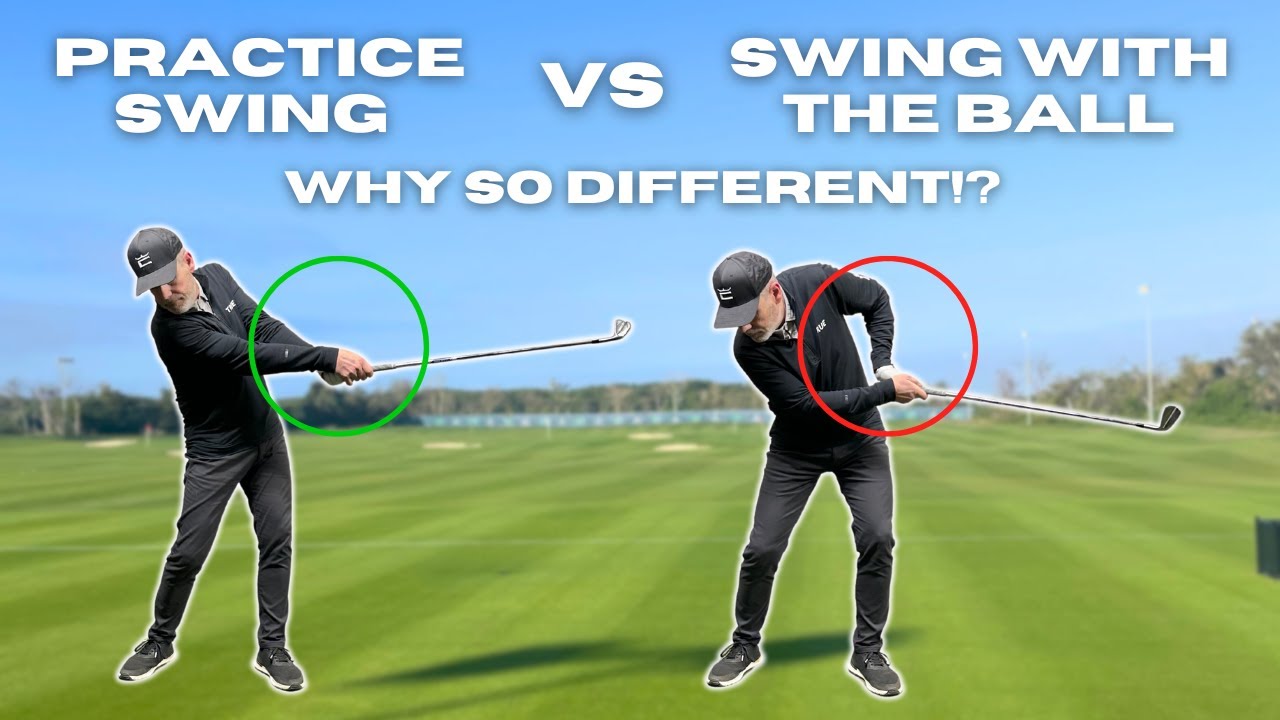If there is one wedge design that has stood the test of time it’s the Ping Eye2. From the early 2000s madness of used BeCu wedges going for up to $400 to the modern-day Glides, it’s the definition of a classic. So classic in fact that we have seen other OEMs take Eye 2 design characteristics and incorporate them into their own designs. In this video, I explain what made the Eye2 so good and why it is still one of the best wedge designs of all time!
- LIKE57
- LEGIT4
- WOW1
- LOL0
- IDHT0
- FLOP1
- OB1
- SHANK4
Instruction
Clement: Why your practice swing never sucks

You hear that one all the time; I wish I could put my practice swing on the ball! We explain the huge importance of what to focus on to allow the ball to be perfectly in the way of your practice swing. Enjoy!
- LIKE0
- LEGIT0
- WOW0
- LOL0
- IDHT0
- FLOP0
- OB0
- SHANK2
Equipment
Mitsubishi Diamana WB: Club Junkie takes a technology deep dive

Earlier this week, Mitsubishi announced the return of its iconic Whiteboard profile with the new Diamana WB shaft.
In our launch story, we offered a rundown of the key technology in the new WB — 80-ton Dialead pitch fiber, Aerospace-grade MR70 carbon fiber, Consistent Feel Design, and the Xlink Tech Resin System. To go deeper, however, we enlisted our Resident Club Junkie and bona fide shaft nut, Brian Knudson, to track down someone from Mitsubishi at the PGA Show. Fortunately, Mitsubishi’s Director of Global Aftermarket Sales, Jonathan Alongi, was on hand to answer all of BK’s questions.
Check out their discussion about the new WB, as well as the 20th anniversary of the original design, in the video above — time stamps of key points below, including a definitive answer as to how the surfboard graphic ended up on the original Whiteboard in 2004!
- :40 – Mitsubishi Japan expands to the U.S. in 2004
- :50 – “The shaft that set the standard”
- 1:12 – “The ‘board is back”
- 1:45 – WB or Whiteboard? Or both?
- 1:55 – The first iteration of the sixth generation of Diamana
- 2:10 – Incorporating key technology from a 20-year journey
- 3:10 – Modifying the tip section for more ball speed
- 3:50 – Delivering ball speed in a low-launch, low-spin shaft
- 4:20 – Drilling down on the shaft profile compared to the original Whiteboard
- 5:00 – The most impressive element of the new WB
- 5:30 – Butt, mid, tip specifications
- 6:00 – WB’s iconic graphics and the Diamana legacy — flowers, surfboard, numbering system
- 8:15 – An abundance of available weights and flexes
- 8:55 – More players going lightweight
Check out more photos and see what GolfWRXers are saying about Mitsubishi WB in the forums.
- LIKE1
- LEGIT0
- WOW0
- LOL1
- IDHT1
- FLOP0
- OB0
- SHANK0
Equipment
2024 Vokey SM10 wedges: Club Junkie’s full fitting video

Our Resident Club Junkie, Brian Knudson, goes through a wedge fitting with Chris Baingo, Titleist’s Club Fitting Analyst.
Get the full story on new SM10 wedges in our launch piece.
- LIKE2
- LEGIT0
- WOW0
- LOL0
- IDHT0
- FLOP1
- OB0
- SHANK0
-

 19th Hole1 week ago
19th Hole1 week agoDave Portnoy places monstrous outright bet for the 2024 Masters
-

 19th Hole2 weeks ago
19th Hole2 weeks agoThings got heated at the Houston Open between Tony Finau and Alejandro Tosti. Here’s why
-

 19th Hole1 week ago
19th Hole1 week agoTiger Woods arrives at 2024 Masters equipped with a putter that may surprise you
-

 19th Hole2 weeks ago
19th Hole2 weeks agoReport: Tiger Woods has ‘eliminated sex’ in preparation for the 2024 Masters
-

 19th Hole4 days ago
19th Hole4 days agoTwo star names reportedly blanked Jon Rahm all week at the Masters
-

 19th Hole3 days ago
19th Hole3 days agoNeal Shipley presser ends in awkward fashion after reporter claims Tiger handed him note on 8th fairway
-

 19th Hole2 days ago
19th Hole2 days agoReport: LIV Golf identifies latest star name they hope to sign to breakaway tour
-

 19th Hole2 weeks ago
19th Hole2 weeks agoAddiction, spinal fusion, and scam artists – Everything Anthony Kim revealed in candid interview with David Feherty























Teddy
Jan 28, 2020 at 8:43 pm
The part of the EYE 2 story you didn’t tell was the lawsuit with the USGA over the groove spacing.
Eye 2 are cast not forged and the groove edges on the early releases where so sharp a Balata cover ball would be shredded after a few holes. To remedy that PING milled the edges a bit after casting. USGA then banned them as non-compliant because grooves where spaced too close together. Solheim, a former Boeing engineer sued USGA claiming the proper way to measure groove spacing was center-to-center not edge to edge. The case was settled with PING Eye 2 given an exemption from all future rule changes regarding grooves. Fast forward to 2010 when USGA mandated V grooves…. Mickelson, Harrington and others started gaming Eye2 wedges again and PING reissued the 60° as the Eye 2 XG.
I still use a 3i – 60° set of Eye 2s with an extra PW bent to 53° as a gag between 50° PW and 56° SW. I had the lofts and lies on all four wedges checked and adjusted.
Bob Vokey
Jun 27, 2019 at 12:20 pm
These wedges are low grade dog food.
Bobbyg
Jun 26, 2019 at 11:28 pm
Had one. Didn’t like it. The groves were great but the rest not so great.
John
Jun 26, 2019 at 9:02 pm
I bought a Ping 56° wedge with the ES sole about two years ago. It worked fine from the sand, but I could not chip with it because the skinny front part of the sole dug into the ground. My handicap was close to zero, so I think I know how to chip at a basic level but even substantial practice didn’t help. As soon as I got rid of that club and switched to a standard sole on the same club, the problem disappeared. Very strange.
Matt Strube
Jun 26, 2019 at 7:44 pm
Ryan, How do these type of wedge designs work for opening up the fact on tighter lies? Great explanation btw.
Matt Strube
Jun 26, 2019 at 7:45 pm
Face, not Fact. 🙂
Garth
Jun 26, 2019 at 5:29 pm
Don’t have a club to show you?
I guarantee?
B grade content at best
Cyril Zupan
Jun 26, 2019 at 4:02 pm
Great Video and explanation …
Before Ping Eye 2 wedges…
I would consider the Hogan Sure-Out and the Bite wedge forerunners to the wide sole..
Thanks and Keep them coming…
Clay Long
Jun 26, 2019 at 3:57 pm
Nice piece on the Eye 2 sand wedge. One thing you missed is the CG location of the Eye 2 compared to conventional classic wedges. The Eye 2 has its CG right in the center of the scoring. Very unusual for popular sand wedges, even the Callaway PM Grind and the Taylormade High Toe wedges don’t accomplish this. (mainly due to no cavity)The high toe shape of the Eye 2 helped accomplish this balance along with the cavity back design. Ugly by classic wedge standards but quite functional as were most of Karsten’s designs. The concaved sole is still difficult to justify and explain its functionality, however it evolved from the wear pattern of older classic wedges that had brand stamps in the center of the sole. Blasting shots from the sand over time dished out the stamping into a concave shape. When going through tour player’s old favorites this worn feature looked like a good shape to copy into a new design. The only thing you can logically draw from the concave sole design is that it allows a sole to bite or dig more easily into the turf the straight on position while offering added bounce resistance or lift when opened compared to a more conventional sole design. (as the designer of the Taylormade High Toe wedge I thought I would offer up these comments)
hoganben
May 16, 2023 at 7:18 pm
recognized your name right away..wow, talk about an expert opinion/comment..thanks for the info